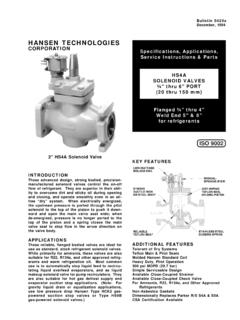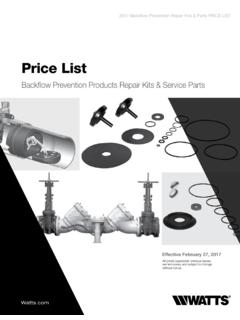Transcription of generally “Climate Change: Basic Information,” …
1 1 What You Do Matters: Your Behavior and Energy Mark D. Martin May 2013 I. What You Do Matters Each of us has choices about using energy. By wise choices and not wasting energy we can help protect the environment and insure the supply of energy now and for future generations. While we all have a right to use energy resources, we also have the responsibility to use them wisely. Read on to learn why we need to save energy and how you can make wise choices. II. Why It Matters Energy conservation, or using less energy, matters. Fossil fuel use is increasing carbon dioxide in the atmosphere and is causing global temperature changes.
2 While the changes seem slight, they may have major environmental and economic impacts. (See generally Climate Change: Basic Information, United States Environmental Protection Agency, ) While the exact impacts are unclear and may largely be felt decades in the future, do we not have a moral obligation today to take steps to lessen these impacts? Is it not prudent to take reasonable and measured steps to lessen our use of fossil fuels? Many forms of energy generation also have other environmental impacts including causing air and water pollution and generation of hazardous wastes.
3 Besides the environmental impacts, there are limited supplies of many energy resources. For example, some believe we are near the time of peak oil after which production of oil will diminish. (See Paul Roberts, World Oil, National Geographic Magazine, (June 2008.) While hydraulic fracturing, or fracking, offers new opportunities for domestic oil and natural gas, it comes with its own uncertainties and environmental problems. (Edwin Dobbs, The New Oil Landscape, National Geographic Magazine, (March 2013).) Getting other forms of liquid fuel can be difficult and expensive.)
4 While we have promising new forms of energy such as solar and wind, these new forms are only a partial solution and will never provide all the energy we need. Saving energy now will give us time to develop these and other new sources of energy such as advanced nuclear power designs. This will help prevent major economic disruption. 2 III. What You Can Do To Save Energy A. Let s Get Going! We already know the fastest, least expensive way to slow climate change: Use less energy. With a little effort, and not much money, most of us could reduce our energy diets by 25 percent or more- doing the Earth a favor while also helping our pocketbooks.
5 So what s holding us back? (Peter Miller, Saving Energy: It Starts at Home, National Geographic Magazine, March 2009, page 60.) There are two main ways to use energy wisely. First, you can use less energy by shutting it off when you are not using it or choosing not to use it in the first place. Second, you can adopt technologies that help you save energy. We will examine these methods in lighting, electronics and appliances, water heating, space heating, air conditioning, transportation, and the products we buy. Don t worry it may hurt a little at first but in the long run it will help you, the environment, and your fellow humans.
6 B. Lighting About 17% of the electricity used by residences and commercial businesses in the United States is for lighting. ( Energy Information Administration, How Much Electricity is Used For Lighting in the United States, ) We, of course, need to light our houses and businesses. We can save substantial energy and money if we do this wisely, however. Shut the lights off. You need light to see when it is dark. You don t need the lights on when you are not in the room, however. Shut the lights off! Let s say you usually leave your bedroom light on when you are elsewhere in the house.
7 If you have a 26 watt bulb and leave it on for two hours each day that adds up to about 19 kilowatt hours per year. To get that number I multiplied 26 watts by two hours by 365 days. To save 19 kilowatt hours per year just shut off the light! To find the money you save you can multiply the kilowatt hours by the cost per kilowatt hour for electricity where you live. In the San Diego area that cost is about $.14 to $.28 per kilowatt hour. More important than the cost savings is that you prevent about 40 pounds of carbon dioxide from entering the environment assuming your electricity is generated by burning coal.
8 (See Energy Information Administration, CO2 Produced Per KWhr, ) Compact Fluorescents. The type of light you use also makes a big difference. You can replace a 60 watt incandescent light with a 13 watt compact fluorescent bulb that produces about the same amount of light. Modern compact fluorescent bulbs are also reported as having better light quality. (Emily Masamitsu, The Best Compact Fluorescent Light Bulbs: PM Lab Test, Popular Mechanics, ) Going from 60 watts to 13 watts is a 78% savings! Fluorescent bulbs cost more but last about 8 to 15 times longer.
9 ( Compact Fluorescent Lamp, Wikipedia, 3 ) LED lights may provide even more efficiency than fluorescent bulbs although they are more costly. (See LED Lamp, Wikipedia, ) T-8 fluorescent lights with electronic ballasts. The type of fluorescent bulb may also make a difference. For example, Keystone Academy in Solana Beach, California, replaced their old fluorescent tube lights with T-8 fluorescent lights with electronic ballasts. Each old tube used at least 32 watts. Each new tube uses only 25 watts although it produces more and better quality light. (See generally Today s Fluorescent Lighting: Better Quality and Efficiency, Eugene Water and Electric Board, ) That s a 26% savings.
10 The lights in the entire school were replaced in about two hours. The cost was free under a government program. Additionally, the ballasts on the old lights had been failing and hence the old lights needed replacing anyway. In this small school with 26 light fixtures with four bulbs each the projected energy savings is 1872 kwhr per year. (It was assumed the lights were on ten hours per day for five days a week and 40 weeks during the year.) That savings prevents about 2,000 to 4,000 pounds of carbon dioxide from entering the atmosphere in a year. (See Energy Information Administration, CO2 Produced Per KWhr, ) C.








